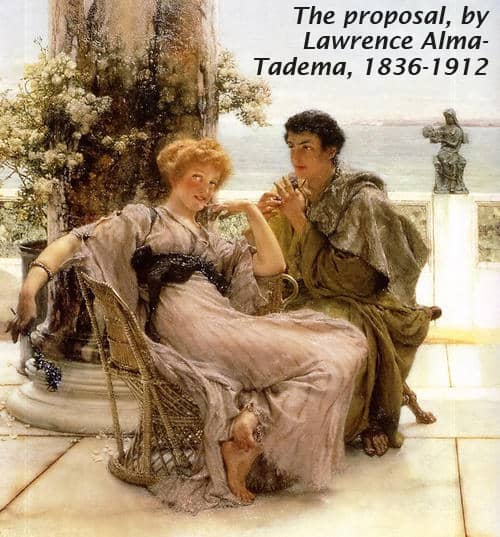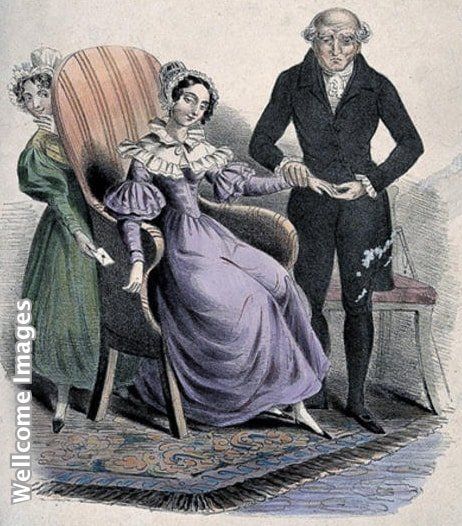There are three key problems with God’s way for romance: getting back to biblical courtship. First, the author seems to confuse Western cultural traditions with biblical teaching.
For example, Dr Burgess appears to equate ‘marriage’ with a church ceremony (pp. 96-97) that involves saying vows taken from the Book of Common Prayer (pp. 60, 88). Throughout, he contrasts that with ‘relationship culture’, never distinguishing between casual sexual relationships and long-term committed relationships.
Church marriage ceremonies (and the registration of the marriage relationship with the state), although not wrong, are a product of Western culture over recent centuries and are not explicitly found in Scripture. If the church is to be pastorally sensitive, it needs to interact with the practices of today’s secular, multi-cultural society, in which many long-term, heterosexual relationships involve neither church ceremony nor state registration.
Married people
Secondly, the book is not a description of biblical courtship, as it claims to be, since several of the guidelines given cannot be supported by the texts of Scripture cited. For example, Dr Burgess argues that the sin described in Matthew 5:28 is one of a man lusting after a woman who is not his wife, and thereby committing adultery in his heart (p.15).
However, the word for ‘woman’ and ‘wife’ in Greek is the same, and the sin of adultery in its biblical definition must involve a married woman — ‘adultery’ means to defile another man’s wife; there was no other understanding in biblical times. So I suggest Matthew 5:28 does not apply to romantic feelings that single people may have for each other, although, of course, Scripture forbids the lust that leads to immorality.
Burgess believes that there should be no physical intimacy before marriage (p.60). He includes close physical affection and intimate kissing on the lips between unmarried people in his definition of sexual immorality. In support, he cites verses 1 and 3 of 1 Corinthians 7 from the NKJV: ‘It is good for a [“an unmarried”: Burgess’ gloss] man not to touch a woman … let the husband render to his wife the affection due her, and likewise also the wife to her husband’.
But in 1 Corinthians 7:3 the Greek word translated ‘affection’ by the NKJV means ‘debt’ or ‘due’, and it is clear that marital conjugal rights are being referred to here. The overwhelming majority of English Bible translations, including the ESV and NIV, understand it that way. The implication is that in verse 1 Paul is talking about the same thing.

Betrothal period
The kissing described in Song of Solomon (1:2; 4:11; 7:9), Burgess believes, is a description of sexual desire found only in marriage (pp. 56-57), despite the widely held view within the Christian community that the Song is a portrayal of Christ seeking and wooing his church.
The New Testament describes Christ’s present relationship to his church as the betrothal period, never describing Jesus as the husband, and yet, for Burgess, there can be no romantic love before marriage. He believes that any boy/girl relationship should be with the specific intention of marriage (he describes this as ‘courting’) and should be unannounced and undertaken in what has the appearance of a secret manner (‘discreet’, ‘low-key’, pp. 44-47).
It is difficult to think of any scriptural basis for this ‘low-key’ approach, and Burgess offers none. By way of contrast, John the Baptist announced to the world that Jesus was seeking his bride, the church (John 3:29).
This understanding of Scripture teaching about courtship leads to what I see as a third key problem of his book: it is over-prescriptive. Providing set solutions to anticipated situations can often produce spiritual weakness rather than strength and give rise to serious pastoral problems. Hopefully, the following imaginary scenario will explain what I mean.
Helen and Harry
Helen grew up in a conservative evangelical home. She was converted when she was 12 years old. She was bright and attractive in every way, but had never had a boy-friend. She was about to leave home for the first time to go to university, and, before she left, her pastor gave her Burgess’ book on romance.
She joined the Christian Union and, after a couple of weeks, Harry, a bright and handsome young man, asked Helen for a date. She explained that, although she liked him, she had read this book on courting and was therefore reluctant to start dating. They could be good friends and ‘court’ in the sense of exploring the possibility of future marriage, but no one except their parents were allowed to know, and no one at university should be told of their intentions.

They followed all the many rules of the book, for example, they were never alone together and there was no physical contact. Furthermore, as the book advised, they kept their courtship a secret.
This initially seemed to work out well, but more and more of the young men at the CU were inviting Helen on a date, because both Helen and Harry had made it clear that they were not actually boy- and girl-friends.
Depression and counsel
By Easter, Helen was showing signs of depression. The bright, outward-going young girl had become tired and morose, because of continual pressure from would-be suitors.
During the summer break she seriously considered not going back to university, because the thought of a new intake of boys seeking to date her was so troubling. Furthermore, both she and Harry felt they were living a ‘lie’.
They decided to have a meeting with their parents, who explained that when they were courting, everybody knew, and so no one had attempted to spoil their relationship. They were happy to spend time alone together and have some physical contact.
They knew that sexual intercourse was only for marriage, but in the greyer areas (for example, holding hands and kissing), they had decided to respect the conscience of each other and not encourage either to behave in a way that the other would find difficult. Both sets of parents said that, in their own case, they didn’t abuse their biblical freedom and were sexually pure when they married.
Then Harry asked about ‘avoiding the appearance of evil’. The parents explained that the Bible speaks of abstaining from every form of evil, not the appearance of evil. The latter is in the eye of the beholder and we cannot be held to account by the imaginations of others.
They pointed out that a rule cannot be made for every possible scenario. Instead, Christians need to grow spiritually by cultivating the habit of thinking biblically. A spiritual, biblically informed mind is better able to address each new situation as it arises.
Biblical principles
Both sets of parents encouraged Helen and Harry to return to university with this new perspective, determined to follow their parents’ sound guidance by following God’s Word according to their own conscience, not the consciences of others.
By Christmas they had announced their engagement, and, after university, Harry was called into the ministry. They found the practical wisdom and self-imposed discipline they had learned while courting an ideal preparation for a life together serving the Lord.
They had realised that an understanding of clear biblical principles, coupled with a love for Christ and their deep desire not to dishonour his name, were the keys to living an exemplary Christian life in the modern world.
This imaginary scenario has a happy ending. But many negative outcomes were also possible. Harry may have broken off the friendship and started courting someone else, perhaps causing Helen to drop out of university and leaving her feeling bereft for many years.
While I agree with Stuart Burgess’s analysis of the mess that is modern, casual relationship culture, I do not see that his description of biblical courtship has a solid basis in biblical exegesis, and thus am unable to recommend this book.









